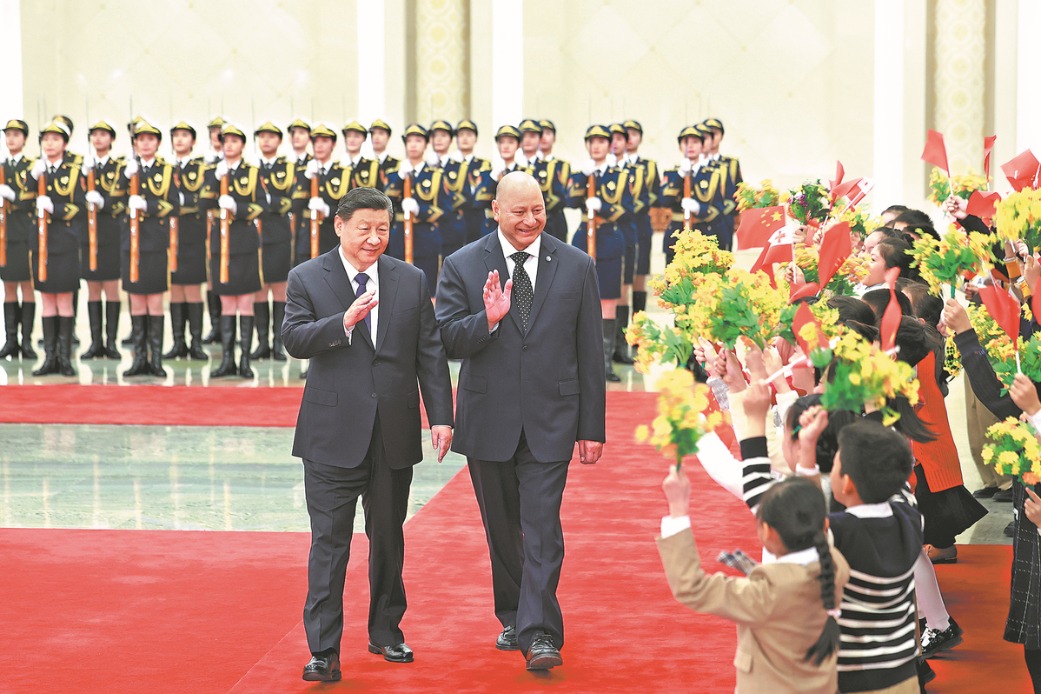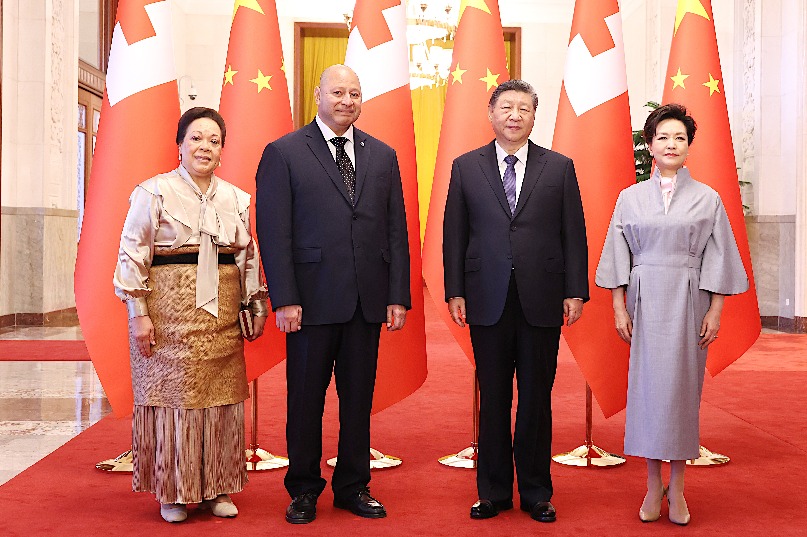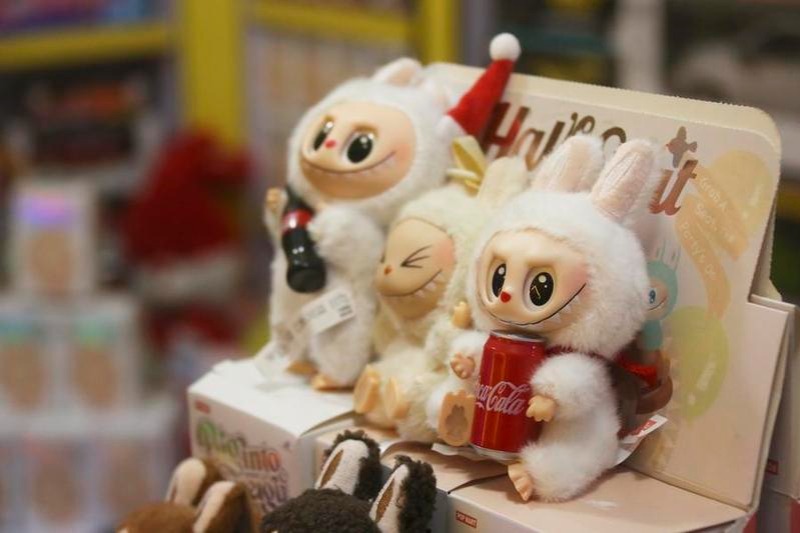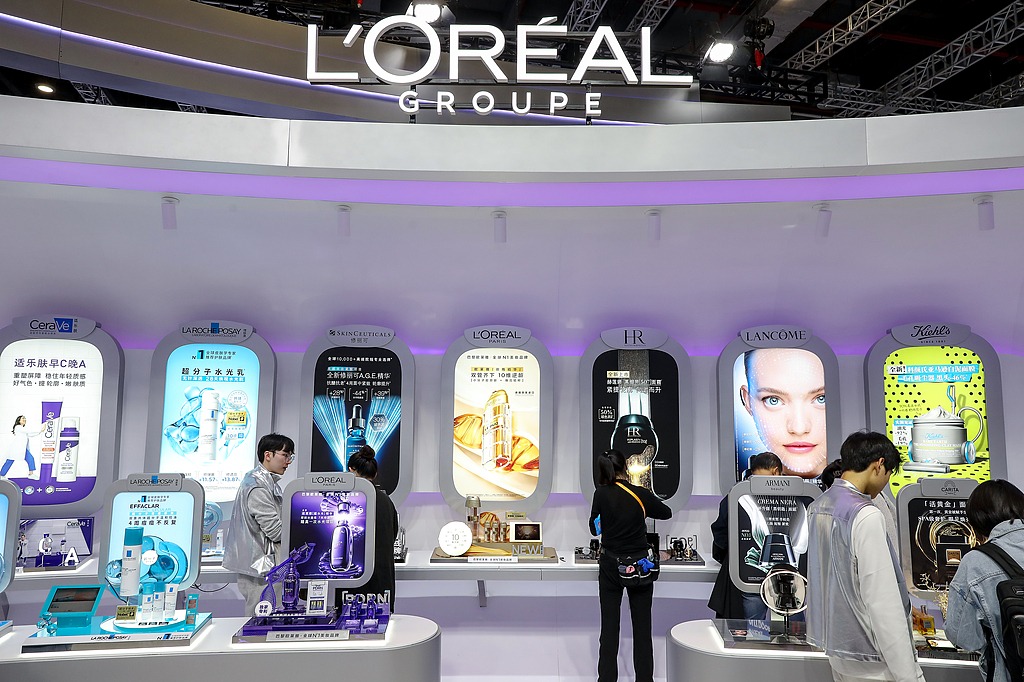Chinese take a shine to fine china

| Chinese visitors select British bone china products at Harrods in London. Alexander Bloom / for China Daily |
The clinking of cups and saucers also means the jingling of coins
In the world of ceramics its name has long reflected the quality you would attach to handbags by Hermes, watches by Rolex or suits by Pierre Cardin, and many of China's well to do have gradually cottoned on to that fact.
So much so that since the British ceramics maker Wedgwood opened its first store in China, in Printemps, Shanghai, in 1996, its business has grown steadily, and it now has 30 stores throughout the country.
In turn, other British ceramics manufacturers have realized that Chinese have developed a taste for the finest ceramics and that there is money to be made.
Wedgwood's customers are middle class and upper middle class, says Laura Roberts, a company spokeswoman. Apart from Beijing and Shanghai, cities in which Wedgwood has a presence include Changchun, Changsha, Chengdu, Chongqing, Hangzhou, Harbin and Wuhan.
The Financial Times says barely 2 percent of the sales of the ceramics manufacturer, Denby Pottery Company Ltd, were outside its core markets in Britain in 2010, but by last year that figure had shot up to 20 per cent, much of the growth being in China.
British trade figures show that ceramics exports to non-EU countries are bouncing back, after falling to 80 million pounds ($122 million; 92 million euros) in 2009. Last year they had risen to more than 100 million pounds.
Simon Willis, sales and marketing director of British Royal Crown Derby, says of the Chinese market: "Sales are continually growing, and great progress has been made, with a particular increase in the past two years as the market has developed."
The British companies have been able to push into China through local department stores and distributors, but have also benefited from the rise in the number of Chinese traveling to Britain.
"Chinese customers are always (going) to Wedgwood because it is such an iconic British brand," says Jordan Payrce, a sales assistant at the Wedgwood shop in Harrods of London.
Pointing to one popular collection, Payrce says: "They love this collection because they are English hand paintings. The decoration is typically English, and these patterns date back to the 1930s. They buy these as real show pieces (and) they are proud to have them at home."
Wedgwood now has two Mandarin-speaking sales assistants in Harrods because of the numbers of Chinese customers, he says.
Li Li, a Chinese tourist in her 30s, bought a teacup and saucer collection with floral decorations in the store.
"My husband likes British bone china, which is of high quality and has a good reputation. So I'm buying this for him," he says.
Another Chinese visitor from Hong Kong, in her 60s, says: "What I like is the quality, and more importantly, the unique design of bone china, the cups and teapots."
Bone china, which originated in Britain, is different from china. Bone china, says Wikipedia, quoting the Dictionary of Ceramics, is a type of soft-paste porcelain that is composed of bone ash, feldspathic material and kaolin. "It has been defined as ware with a translucent body containing a minimum of 30 per cent of phosphate derived from animal bone and calculated calcium phosphate."
Bone china is renowned for its whiteness and translucence, strength and resistance to chipping, Wikipedia says, quoting a work on Asian ceramics.
Willis says the number of Chinese visitors to Harrods has grown in particular as a result of events concerning the British royal family.
"The diamond jubilee of the queen last year received great interest, and sales grew as a result. This year we have a royal baby and we have developed an iconic range of products to mark this historic event, so we predict sales will continue to grow."
While china has dominated the ceramics industry for thousands of years, a surge of interest among Chinese people in recent years has been fueled by the increase in travel and prosperity, Willis says.
"I am sure that is set to continue for many years to come."
In June the World Tourism Organization said China is the fastest-growing tourism source market, with Chinese travelers increasing from 10 million in 2000 to 83 million last year. Their overseas spending totaled $102 billion, it says.
"As the retail infrastructure evolves and more of the population travels around the world we are seeing a variety of new opportunities arise," Willis says.
Chinese people travel to the UK and experience British afternoon tea culture, shop in central London's shopping malls and see the bone china brands, and those are the brands they then want to take home.
Sales of tableware continue to grow as Chinese discover the wide range of Western cuisine available, Willis says.
Analysts say another important reason is the penchant of China's sophisticated middle class for brands from the West.
They have "an appreciation for high quality English luxury brands", Roberts says.
"We have a growing number of Chinese consumers who love authentically English products," Roberts says.
Willis says middle- and upper- class Chinese are starting to appreciate quality and the tradition of Royal Crown Derby, which goes back more than 250 years.
With ceramics being such an important part of Chinese culture, Willis says: "We are targeting those consumers who can appreciate the quality of what we design and create".
A lot of the marketing focuses on the company's history and craftsmanship as well as links to the British royal family.
"The royal events of the past few years have provided us with the platforms to showcase this relationship," Willis says.
Hua Zong, a popular micro-blogger on China's Sina Weibo, says there are two types of bone china buyers in China: china lovers, who usually spend time researching various brands, and high-spending buyers, who are unaware of the cultural connotations.
For all the buyers, British bone china brands are very attractive, while Chinese bone china has not gained recognition.
However, Chinese companies can also produce fine bone china now, he says, citing companies in Tangshan, Hebei province. But when it comes to the design, there is a huge gap between China's bone china and Britain's.
Roberts says Wedgwood epitomises English elegance, something that is attractive to Chinese consumers.
"Our products are distinctly English, high quality and combine English heritage with modern design. While our business has always been founded on chinaware, we are moving toward becoming a leading home and luxury lifestyle brand not just in tabletop but in the gifting and home decor sectors through our product innovation and design excellence."
Contact the writers through
zhangchunyan@chinadaily.com.cn
(China Daily Africa Weekly 08/09/2013 page22)
Today's Top News
- Hong Kong, Macao to get more support
- Emergency space mission accomplished
- Japan blasted for continuing to defend remarks
- 'Bricks' for lunar base clear tough first test
- Xi calls for consolidating Sino-Russian partnership in energy
- Lang Ping honored with IOC lifetime achievement award































